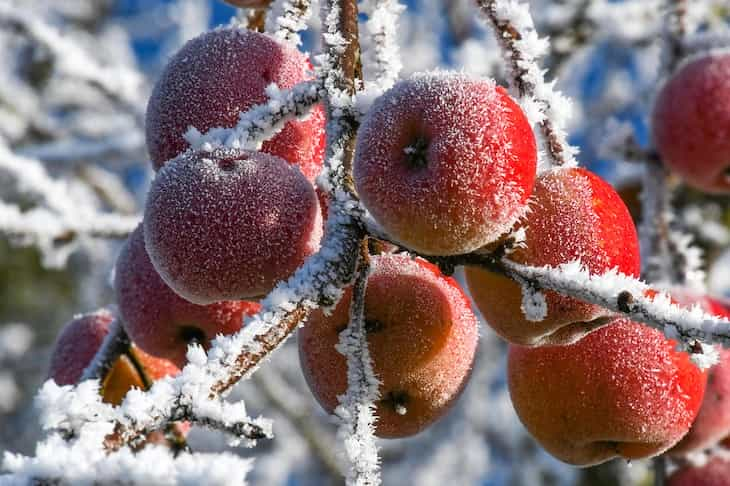Gardening tips: Save your apple trees – protect them in winter
Fruit trees seem to be perfectly resilient - they can stay strong and healthy for many years, so low temperatures or snow don't affect them too much.
Meanwhile, if you want your apple trees to stay healthy and strong, you should protect them from cold and humidity that can lead to illnesses.
Here are a few tips you can use to make sure your apple trees survive a cold winter.
Prune branches
Before winter arrives, trim any dead or damaged branches from your apple tree.
This helps prevent them from breaking under the weight of snow or ice.

Mulch the base
Apply a layer of mulch around the base of the tree.
This helps insulate the roots and protects them from extreme cold temperatures.
Wrap the trunk
Wrap the trunk of the tree with a tree wrap or burlap to shield it from harsh winter winds and frost.
This can prevent sunscald and damage to the bark.
Avoid excessive watering
During winter, reduce the amount of watering for your apple tree.
Overly wet soil can lead to root rot and other problems. Only water if the soil becomes extremely dry.
Keep pests away
Inspect the tree for any signs of pests or diseases before winter.
Take necessary measures to control or treat these issues to protect the tree during the dormant season.
Clear snow carefully
If heavy snow accumulates on the branches, gently brush it off using a broom or your hand.
This helps prevent the branches from bending or breaking.
Provide shelter
If possible, create a windbreak or provide some form of shelter for your apple tree.
This can be a fence or a structure that helps block strong winds and reduce the tree's exposure to harsh weather conditions.
Monitor for ice accumulation
Check the branches regularly for ice buildup. If ice forms, carefully remove it to prevent damage to the branches.
Previously, we talked about Japanese maples.
